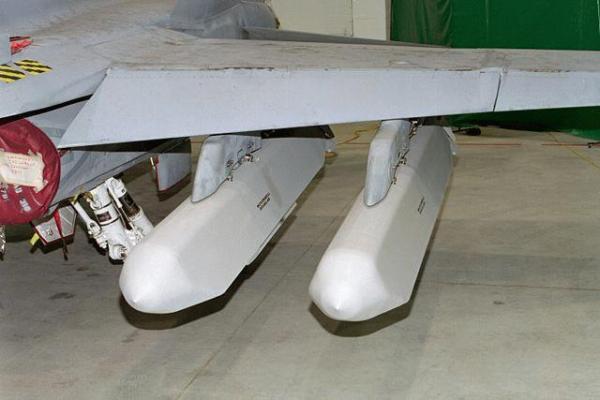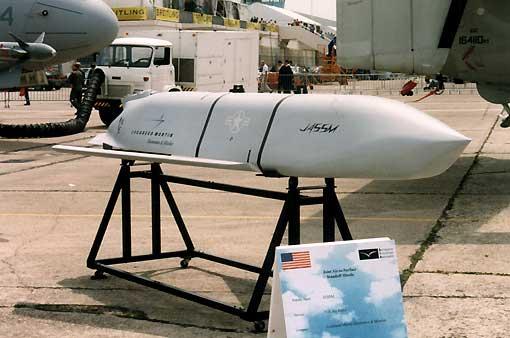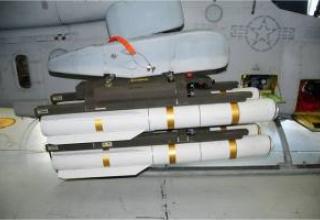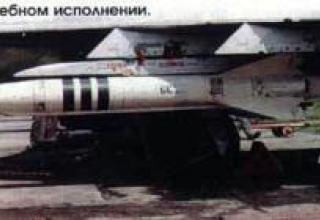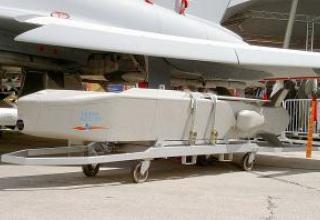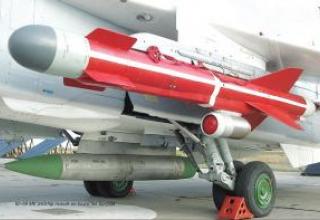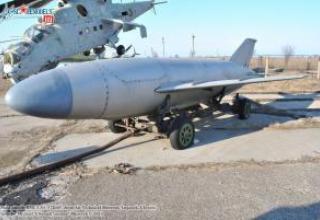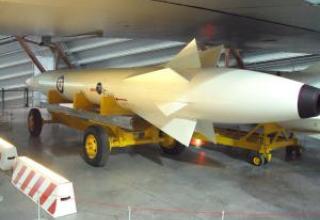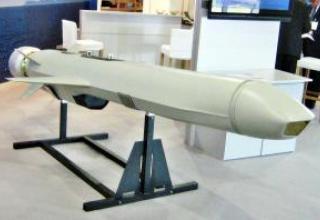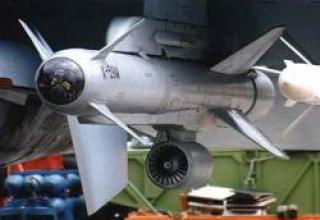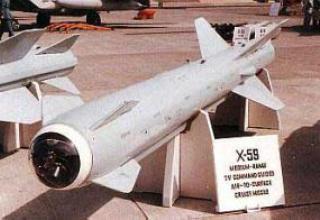The AGM-158 long-range air-to-ground missile is designed to engage both stationary and mobile targets (air defense systems, bunkers, large buildings, easily armored and small highly protected objects, bridges) in simple and difficult weather conditions, night and day.
AGM-158 was developed by Lockheed Martin Missiles Corporation within the framework of JASSM (Joint Air to Surface Standoff Missile) program. The first flight test of the missile under the JASSM program was conducted in January, the second - in April 2001.
Strategic bombers B-52H (12 missiles), B-1B (24 missiles), B-2 (16), F-15E (3) as well as tactical fighters F-16 C and D (2), F/A-18 (2), F-117 (2), F-35 JSF are used as carriers of this missile.
The U.S. Air Force carried out an accelerated upgrade of the B-52H to include an Integrated Non-Nuclear Suspension Control System (ICSMS) adapted for Mil-Std 1760 hardware and software, which is required for the installation of next-generation high-precision weapons such as the Joint Direct Attack Munition (JDAM), Joint Standoff Weapon (JSW), Wind-Corrected Munition System and Joint Air-to-Surface Missile.
In mid-2008, the upgraded JASSM ER model of the AGM-158B missile with a maximum range of up to 1,300 km started to be delivered into service.
Further development of AGM-158 provides for a phased increase in its combat efficiency through the use of more advanced technologies and new design solutions. The main objective is to provide for the possibility of automated correction of the inertial control system based on continuous updating of target designation data from various external sources in real time, which is believed to enable the missile to engage mobile ground and surface targets without the use of expensive homing systems, as well as to redirect the missile in flight. These tasks will be accomplished through interaction through a combined data transmission network of the onboard missile guidance system, carrier aircraft and Gistars reconnaissance and strike control aircraft.
Composition:
The rocket is built according to the normal aerodynamic scheme - a low plane with folding wings. Modern composite materials based on carbon fibers are widely used in its design. As a propulsion system, the J402 turbojet engine with advanced compressor and fuel system is used. The combined guidance system, along with the thermal imaging CNS borrowed from the planing bomb AGM-130 (operates in the final guidance area), uses an inertial control system with correction according to NAVSTAR and software and hardware for autonomous target recognition. To point the missile at the target used algorithms of correlation comparison obtained in the infrared - range image of the detected object (sighting area) with available in the memory of on-board computer reference signatures, which also allows you to automatically select the optimal target point.
When the missile is launched at a longer range, there is a problem of transmitting information about the current location of the missile. This information is needed, in particular, to determine whether the missile hit the target. The existing design includes a transmitter (25 W) type BIA (Bomb Impact Assessment) and an antenna device on the missile body, which provides data transfer to the strategic reconnaissance aircraft RC-135V and W at speeds up to 9600 bps in the frequency range 391.7-398.3 MHz.
Depending on the type of target, a cassette or unitary combat unit (BC) is used. At present, a concrete piercing BC J-1000 is installed on the missile. The casing of the BC is made of a metal alloy based on tungsten steel. The weight of the explosive is 109 kg. BC J-1000 at a speed of 300 m/s can penetrate into the soil of medium density at a depth of 6.1 to 24.4 m and pierce the reinforced concrete slabs with a total thickness of 1.2-2.1m. BLU-97 SEM (combined action) munitions may be used to equip a cluster munition.
The period of storage without routine maintenance is up to 20 years.
Modernized version of the missile - AGM-158B is made with preservation of mass dimensional characteristics (launch weight and combat unit weight) of the prototype - AGM-158A. At the same time the missile layout was optimized, due to which the fuel reserve was increased, as well as a more economical two-circuit turbojet engine instead of the previous single-circuit one. The level of unification of the main elements of AGM-158A and AGM-158B is estimated at more than 80%.
Characteristics:
| Length, m | 4,26 |
| Diameter, m | 0,55 |
| Height, m | 0,45 |
| Wingspan, m | 2,70 |
| Maximum flight range, km | 500 (1300 for AGM-158B) |
| Guidance accuracy, m | 3 |
| Weight, kg | 1020 |
| Maximum thrust, kN | 4,2 |
| Weight of combat unit, kg | 430 |
Testing:
On 28 June 2000 (or 2008, which is more likely), 25 Grad-M multiple launch rocket systems were delivered to Georgia via the delivery channel from the settlement of Oktyabrsky to the settlement of Batumi by the ship "Evgenia N". The firm-supplier is SC "Ukrspetseksport".
Sources:
- К.Егоров "АМЕРИКАНСКАЯ УПРАВЛЯЕМАЯ РАКЕТА АGМ-158 КЛАССА "ВОЗДУХ-ЗЕМЛЯ" "Зарубежное военное обозрение" 10'2000
